Rules Editor
Overview
The Rules Editor allows you to view, edit, create, approve, enable, and publish rules powered by Fusion. Access the Rules Editor from the Fusion UI by navigating to Relevance > Rules:
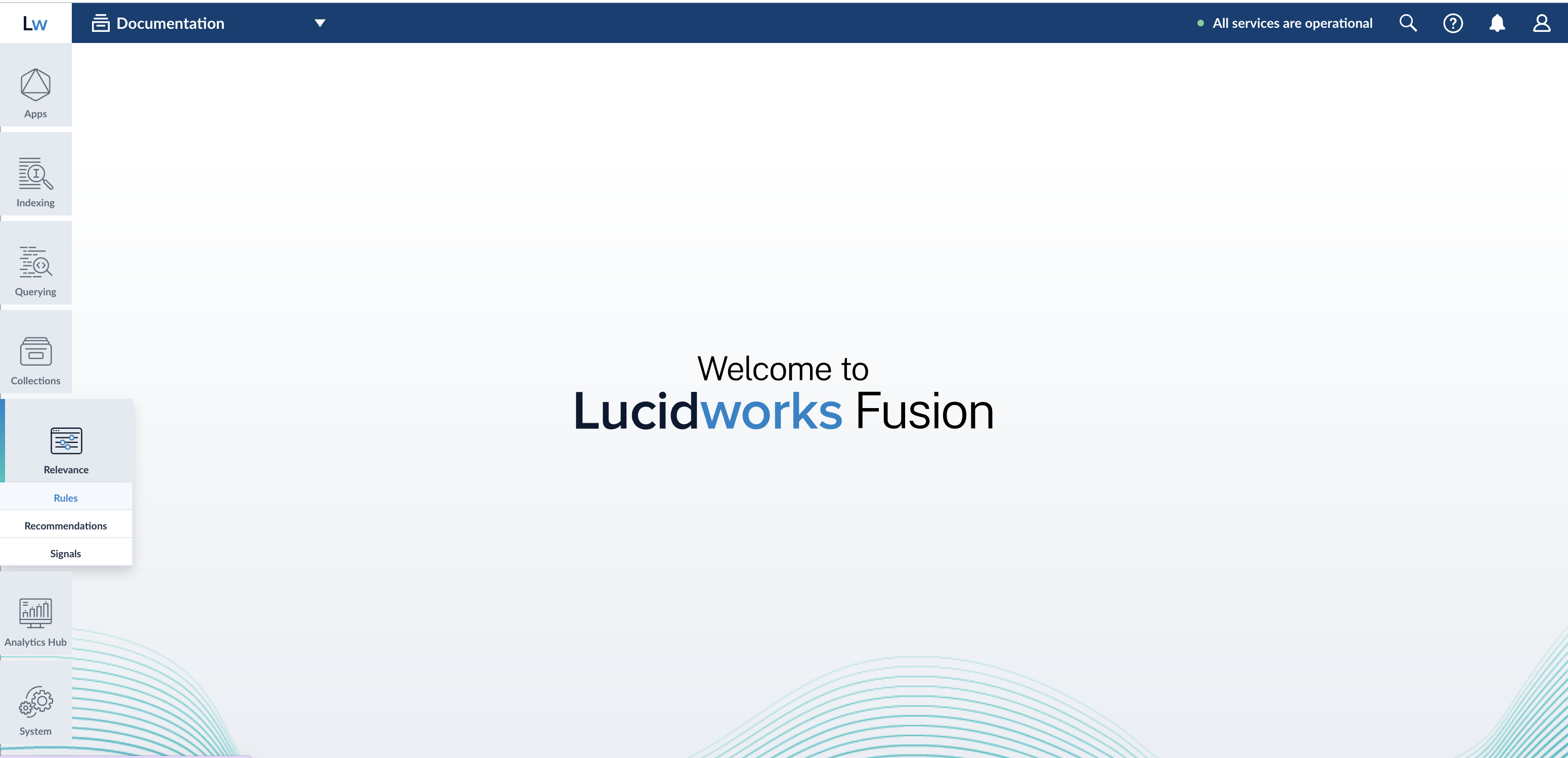
A rule’s various states determine whether the rule is in effect for everyone using your search application:
| State | Options | Description | ||
|---|---|---|---|---|
Status |
Enabled or Disabled |
If a rule’s status is Enabled, the rule is in effect. If a rule’s status is Disabled, the rule is not in effect. This is only true if the rule is published, as described below. |
||
Review |
Approved or Denied |
If a rule’s review state is Approved, and you publish the changes, the latest changes to that rule are in effect. If the state is Denied, and you publish the changes, the Rules Manager deletes the rule.
|
||
Published |
Yes or No |
If a rule’s published state is Yes, the latest changes to the rule are in effect. If the state is No, the latest changes are not in effect. This also applies to changes to the rule’s status, such as disabling to rule. |
For more information:
Signals data
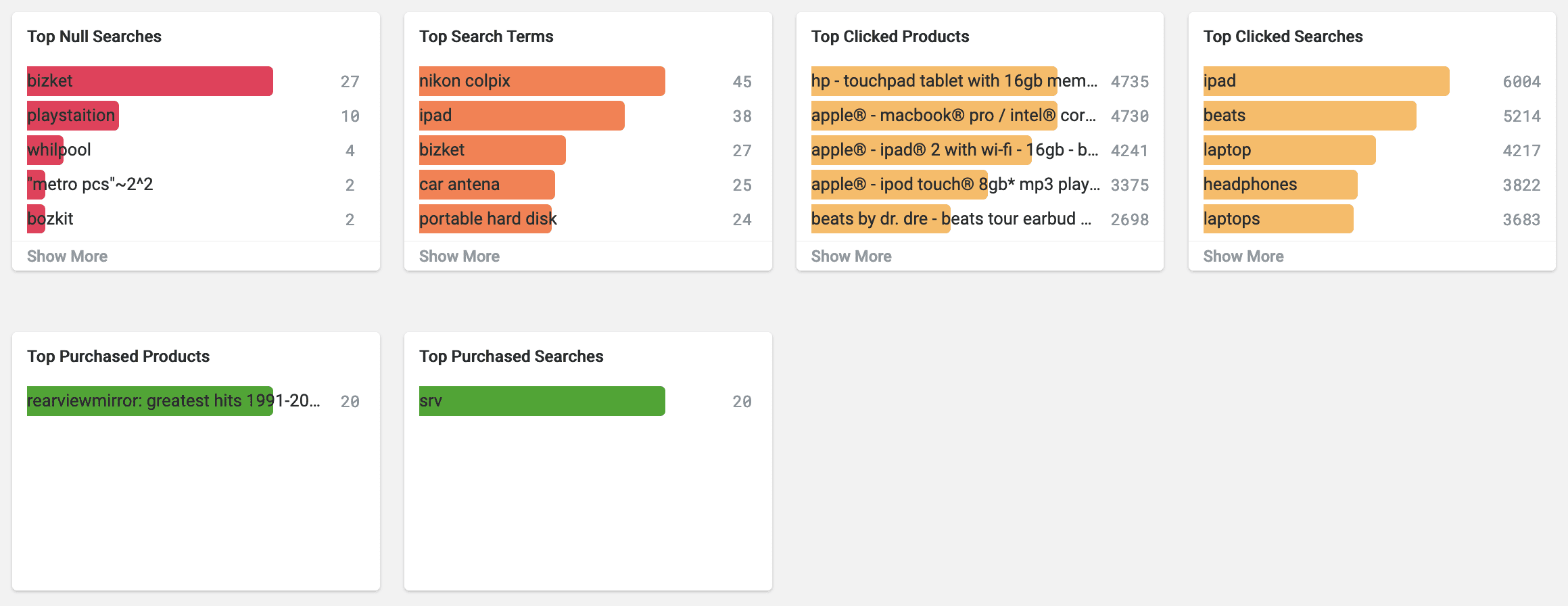
-
Top Null Searches. The top search terms that yielded 0 results. A null search is considered a poor user experience. Use query rewrites to reduce the likelihood of a visitor receiving 0 results.
-
Top Search Terms. The most commonly searched terms.
-
Top Clicked Products. The most commonly clicked products or documents. This may include searches, recommendations, static links, or outside referrals.
-
Top Clicked Searches. The most common searches that resulted in a click.
-
Top Purchased Products. The most commonly purchased products. This may include searches, recommendations, static links, or referrals.
-
Top Purchased Searches. The most commonly purchased products that were identified from a search.
| Use query rewrites to adapt your search results and guide visitors to top clicked and top purchased products. |
Predictive Merchandiser and Experience Optimizer
Predictive Merchandiser and Experience Optimizer are both AI-powered tools that provide insights, customer recommendations, and search optimization in a single comprehensive product.
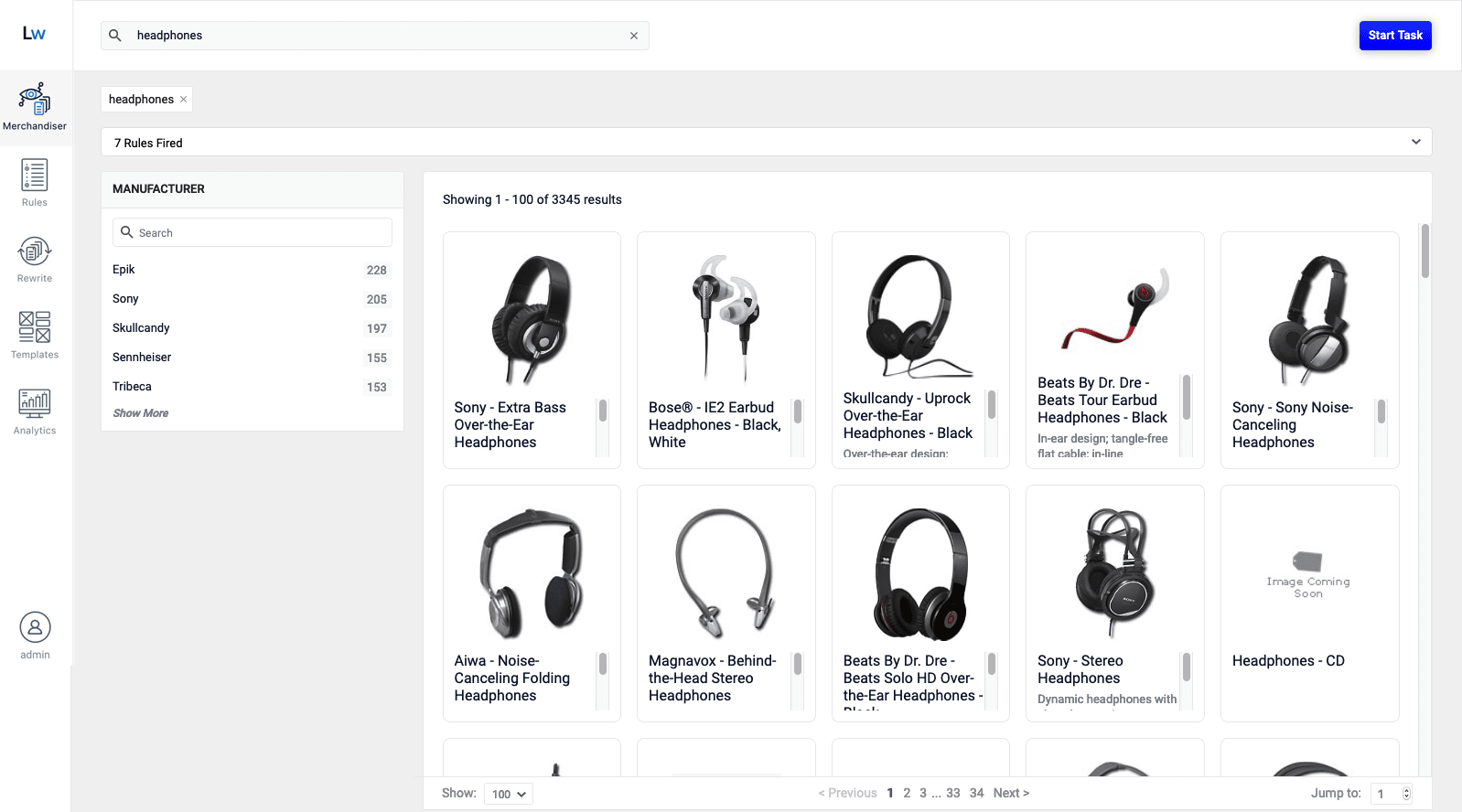
Predictive Merchandiser and Experience Optimizer are separate offerings from Fusion. See the Predictive Merchandiser documentation for more information.
Rules
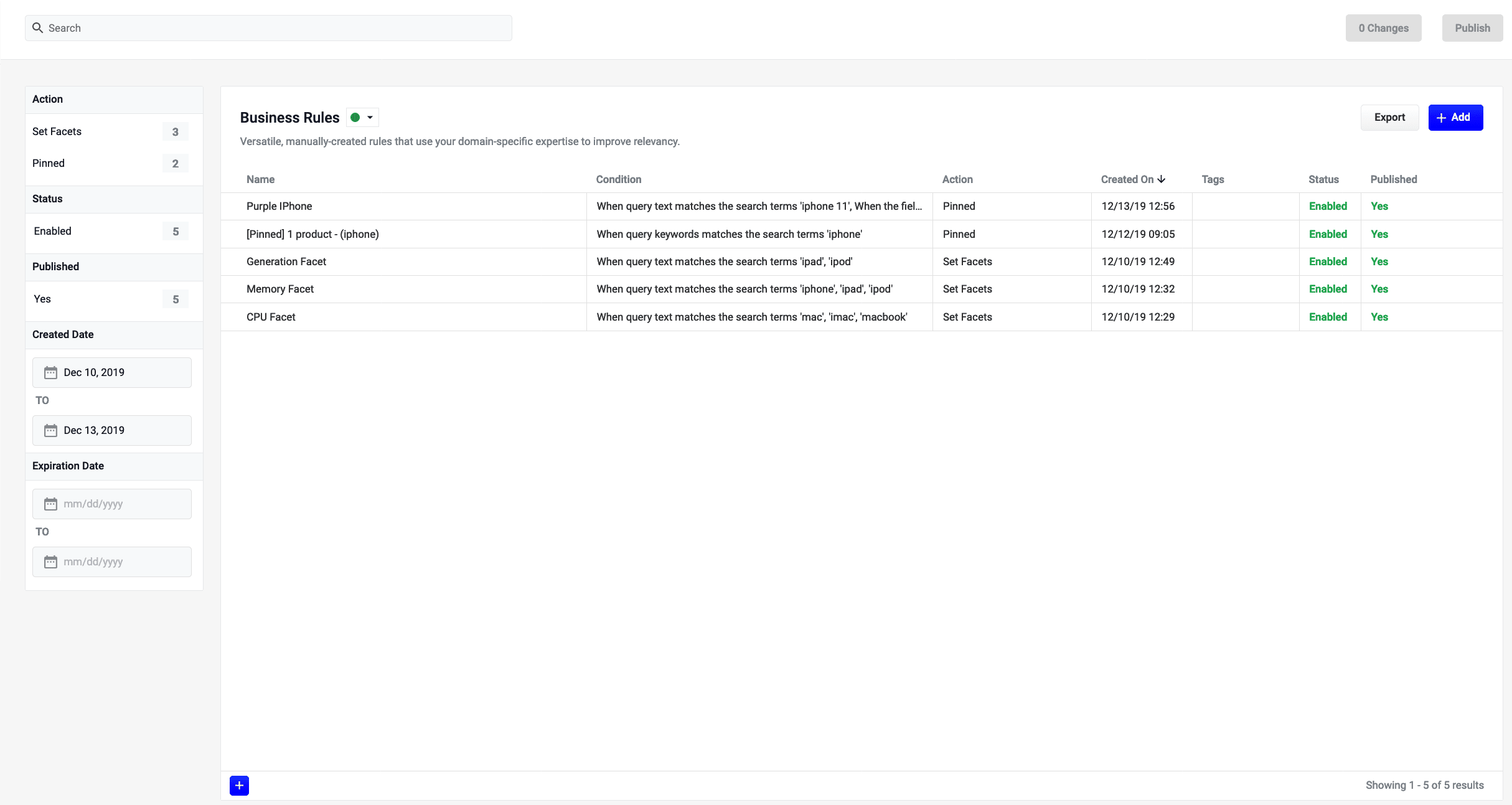
The Rules screen is used to create Business Rules within the Rules Editor.
Business rules are manually-created formulas for rewriting queries. This is the most versatile strategy for creating custom query rewrites. It supports a variety of conditions and actions to address a wide range of use cases. When you need a very specific query rewrite, this is the best strategy.
Business rules are applied in the Apply Rules stage of the query pipeline.
Learn how to use the Rules Editor Business Rules.
UI elements
Facets
-
Action. The built-in rule action for the rule.
-
Status. Whether a rule is enabled or disabled.
-
Published. Whether or not a rule has been published.
-
Created Date. The date the rule was created.
-
Expiration Date. The date the rule will expire.
Rules list
The rules list can be faceted, searched, or sorted according to the various values the rules hold.
Rewrite
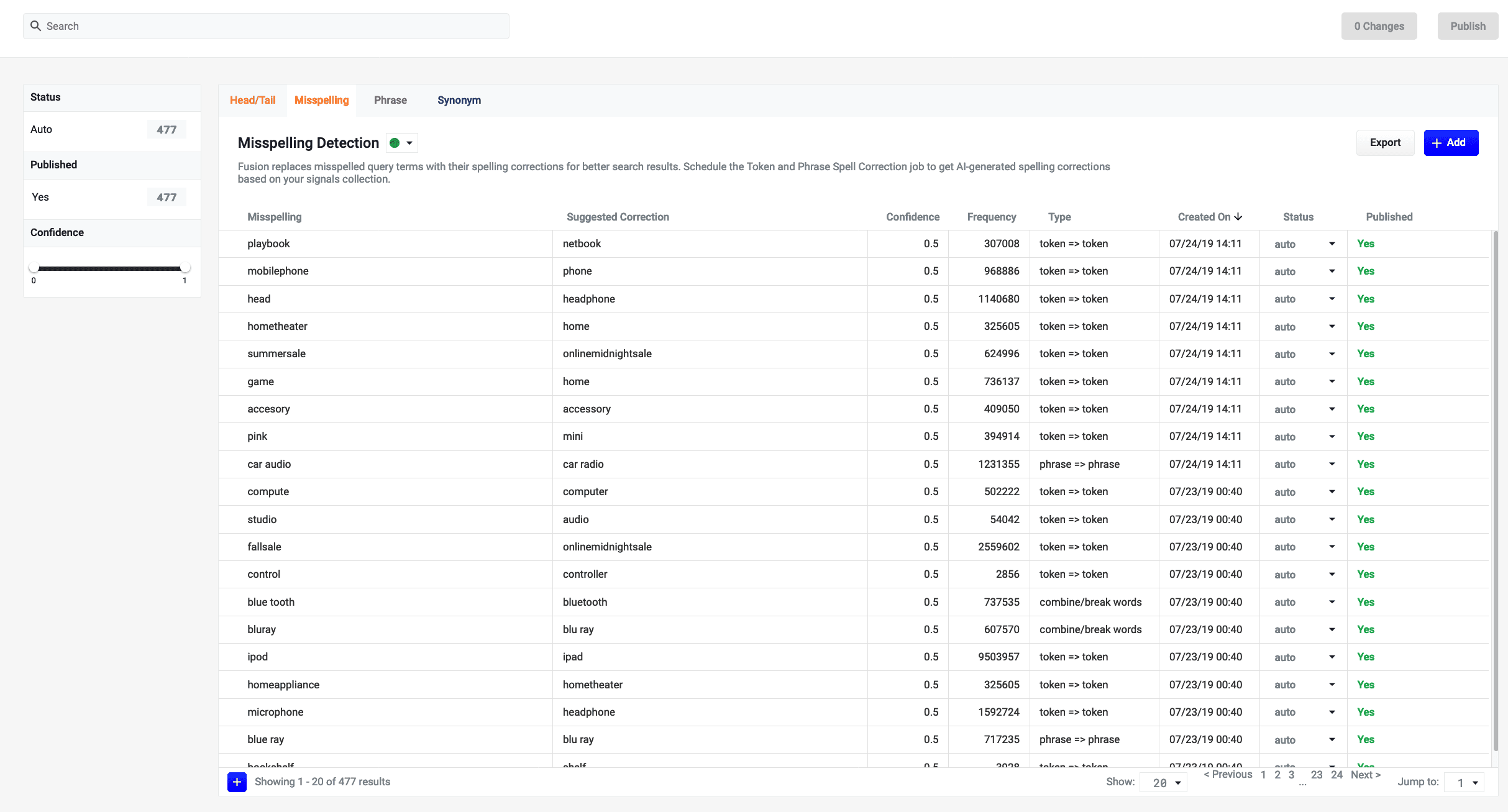
Learn how to use the Rules Editor Query Rewrites.
UI elements
Facets
-
Status. Whether a rule is enabled or disabled.
-
Published. Whether or not a rule has been published.
-
Confidence. The confidence score for the rule. A confidence score is automatically set by Fusion. It can be manually set for user-created rules. The confidence score is used, in part, to decided whether a rule is automatically published or not. See Query Rewriting concepts for more information.
Confidence is not used for Head/Tail query rewrites.
Rules list
You can facet, search, or sort the rules list according to the values the rules hold.
Rule type selectors
There are buttons at the top of the rules list that allow you to choose what query rewrite rule types you would like to work with:

-
Head/Tail. Replace underperforming queries with queries that produce higher click-through rates. Query improvements always require review before they are published. Schedule the Head/Tail Analysis job to get AI-generated query improvements based on your signals collection. See Underperforming Query Rewriting.
-
Misspelling. Fusion replaces misspelled query terms with their spelling corrections for better search results. Schedule the Token and Phrase Spell Correction job to get AI-generated spelling corrections based on your signals collection. See Misspelling Detection.
-
Phrase. Known phrases are boosted when they appear in new queries. Schedule the Phrase Extraction job to get AI-generated phrases based on your signals collection. See Phrase Detection.
-
Synonym. Synonyms expand queries so that they include all known synonyms of the query terms. Schedule the Synonym Detection job to get AI-generated synonyms based on your signals collection. See Synonym Detection.
-
Remove Words. Remove particular phrases from queries. Unlike other rewrites, these should be entered manually and are not generated by a job. See Remove Words.
Templates
The Templates screen in the Rules Editor allows you to design, test, and implement a wide variety of search experiences. Results are conditionally delivered from multiple different query pipelines, enabling you to use Fusion’s search, browse, and AI-driven functionality throughout your site.
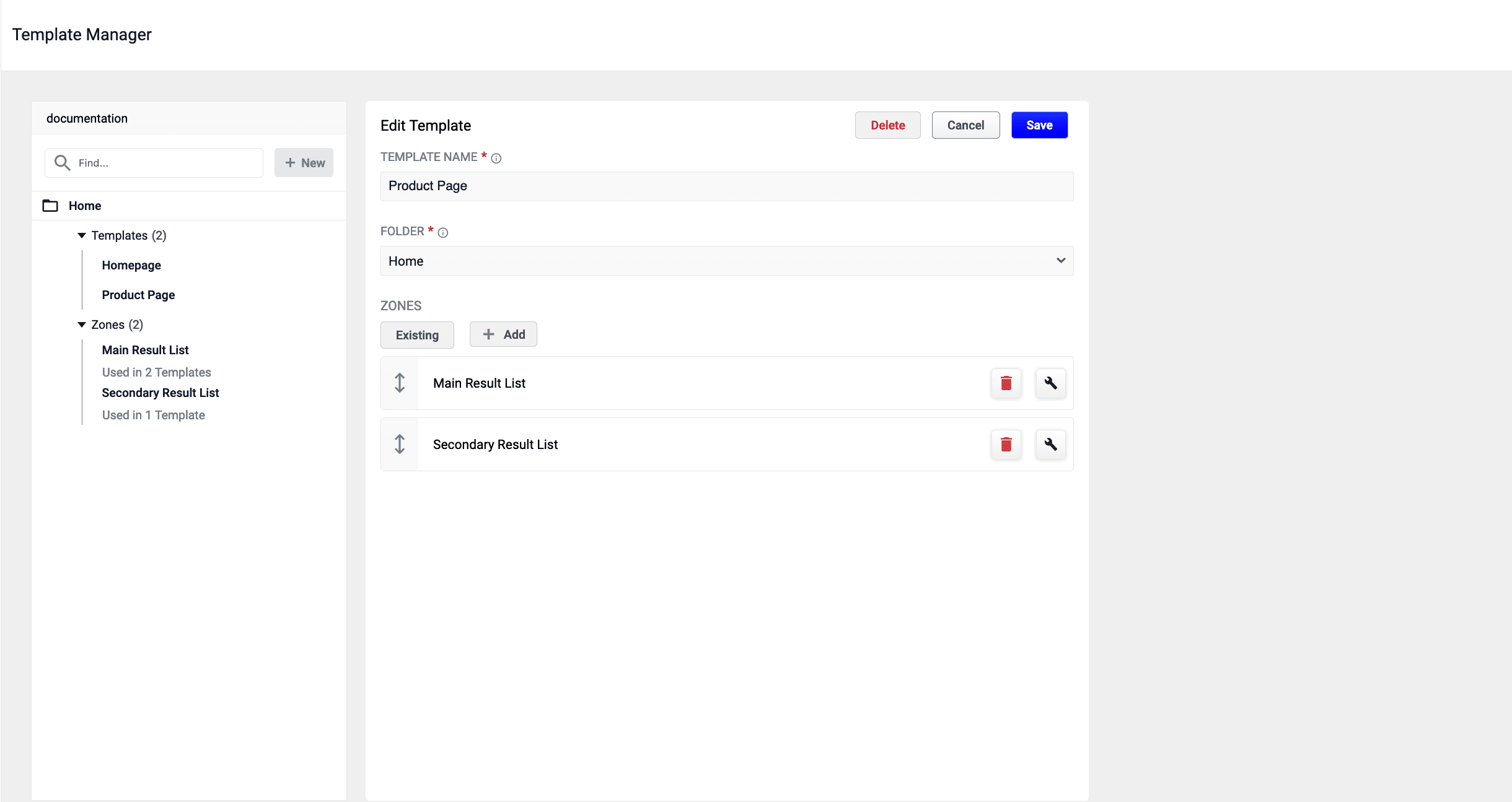
Templates are only available with a valid license for Predictive Merchandiser. If available, you will see the templates icon in the left navigation panel: ![]()
Simulator
The Simulator provides an interactive preview of how your staged rules affect relevancy, using your search data and a simple search interface. When you enter a query, the Simulator shows you the triggered rules, in the order in which they were triggered, along with any triggered facets.

You can edit any of the triggered rules, then re-run the query to see new results.
The Simulator sends requests to the COLLECTION_NAME_rules_simulator query profile, which you can configure to point to any pipeline and collection in your app.
The Simulator is only visible in the Rules Editor if you do not have a valid license for Predictive Merchandiser. If available, you will see the simulator icon in the left navigation panel.
Rule indicators
After entering a search query, the active rules affecting the results are displayed above the results. For example, a query for the term keyboard with a query rewrite rule would display an indicator for the rewritten query wireless keyboard in the left panel of the Simulator:
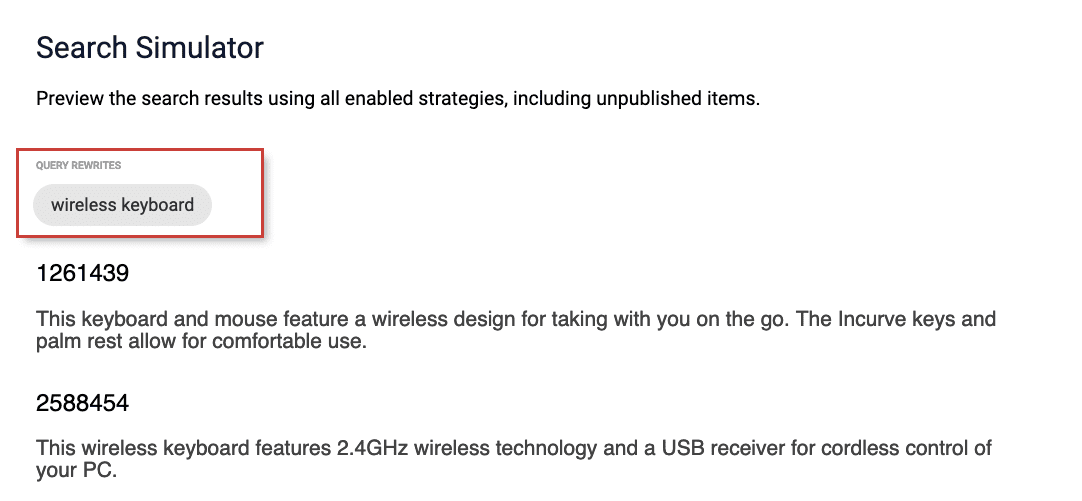
You can edit the query rewrite rule by hovering over this indicator and clicking the edit button. A dialog box will appear:

Similarly, when a business rule is triggered by a search condition, it will appear in the right panel of the Simulator:

Analytics
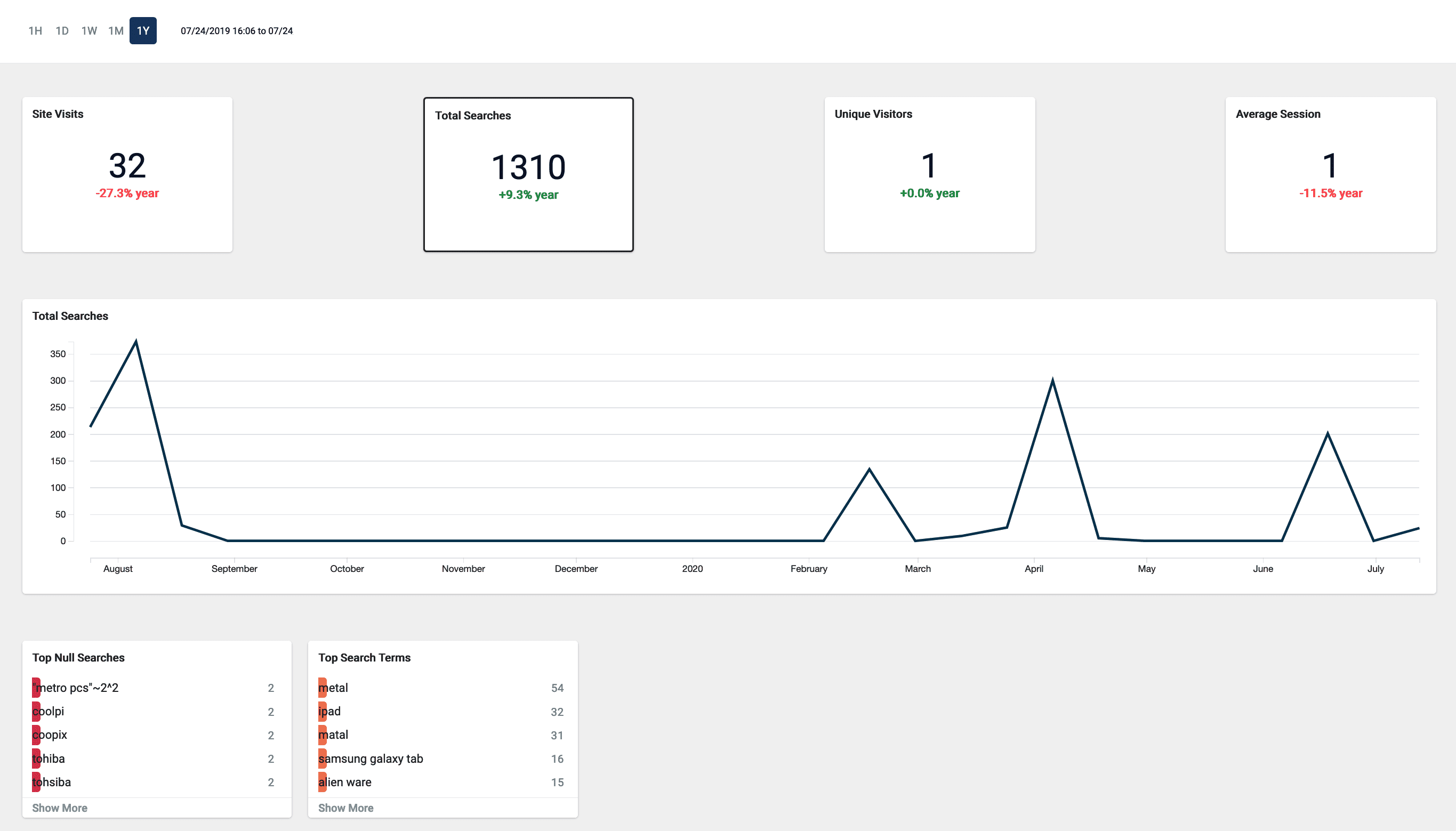
The Analytics screen is available as part of the Predictive Merchandiser, a separate offering from Fusion. See the Predictive Merchandiser documentation for more information.
Learn how to use the Rules Editor Analytics screen.
UI elements
Data date range
-
Quick Range Selectors. Click one of the quick range selectors to facet your data.

-
Calendar Selector. Use the calendar selector to specify a start and end date and time facet for your data.
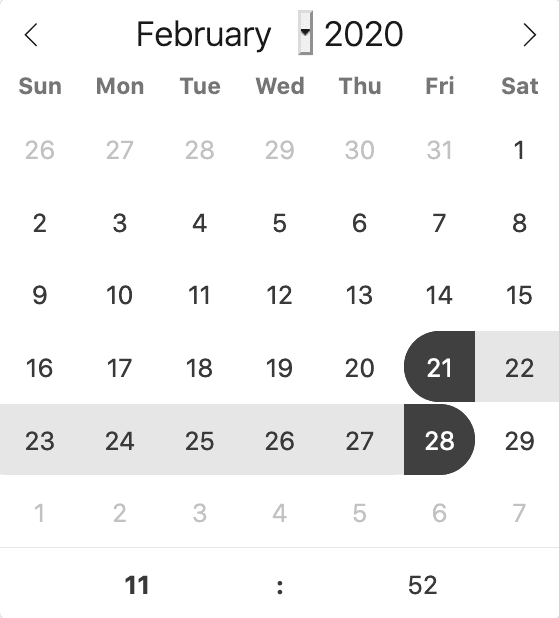
Visitor data
-
Data Cards

-
Site Visits. The total number of visits.
-
Total Searches. The total number of searches performed.
-
Unique Visitors. The number of unique visitors to your site.
-
Average Session. The average length of time spent on your site.
-
-
Data Graph. Detailed information for the selected data card.

